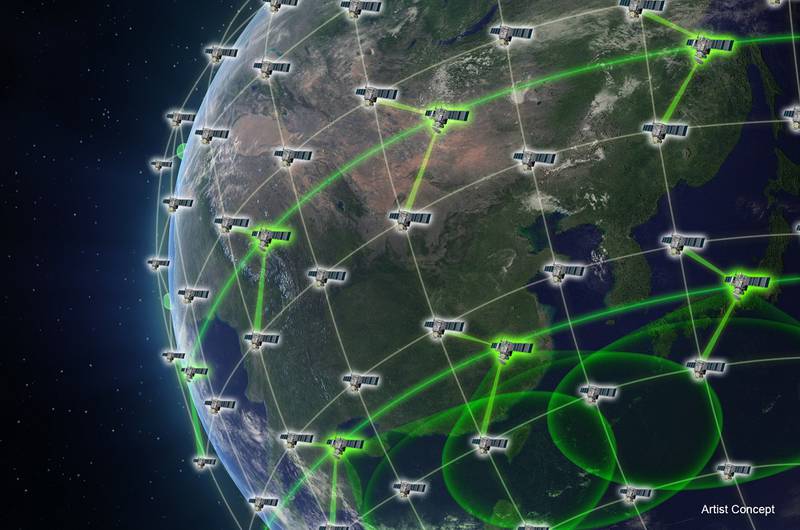An experimental Lockheed Martin payload launched in December will test new cloud networking capabilities that could be of interest to the Pentagon, which wants to develop its own mesh network in low-Earth orbit by 2022.
Developed in just nine months, the company’s Pony Express 1 mission will test new capabilities enabled by software-defined technology.
The military has grown increasingly interested in building an on-orbit computing capability that can use the vast amount of data satellite sensors collect for new missions, including Beyond Line of Sight targeting and tracking hypersonic weapons.
RELATED

Satellites can fulfill a number of unique missions through their vantage on orbit, but at the end of the day, most of the data they collect is processed on the ground.
Historically, the reason for this was simple: The size, weight and power restrictions of placing satellites on orbit precluded any excess payloads or components. So instead of hosting computing components on orbit to process the torrent of data collected by sensors, satellites downlink the data to a ground station for processing. Some companies have sought to speed up this process either by downlinking data directly into the cloud or using other satellites to transmit data to a ground station not accessible to the original satellite, but the model remains the same — collect data in space and then deliver it to a terrestrial network for processing.
That status quo works for most missions, but there is a growing demand to change that dynamic, especially from the Pentagon.
Driving that demand is a new threat: hypersonic weapons. Those weapons are capable of evading a number of sensors purpose-built to detect ballistic missiles. To counter the threat, some at the Pentagon envision a space-based sensor layer comprised of dozens of satellites in low earth orbit (LEO) that can track those weapons as they traverse the globe, seamlessly passing off tracking data to other sensors as the threat moves on from one sensor’s field of view and into another’s.
That’s the purpose of the Hypersonic and Ballistic Tracking Space Sensor, a system being developed by the Missile Defense Agency in coordination with the Space Development Agency. The head of the MDA has dismissed the development of sensors for that system as a solvable engineering issue — the real challenge is connecting those sensors through a network and providing enough on-orbit computing power to fuse the data and task the satellites accordingly.
The SDA wants to build a “Transport Layer†of satellites to do just that. The agency has asked industry to weigh in on the optical intersatellite links that will enable the basic network and expects to have an initial wave of satellites on orbit in 2022.
Though privately funded, Lockheed Martin’s experimental payload could feed into those efforts. The company is one of the major manufacturers of Department of Defense satellites. Pony Express 1 will no doubt inform its interaction with the SDA and other stakeholders as they work toward establishing a mesh network in LEO.

Launched in December as a payload aboard the Tyvak-0129 spacecraft, the Pony Express 1 nanosat is on a pathfinder mission for the company. According to Lockheed Martin, Pony Express 1 and its successors will test new space-based computing capabilities that could enable on-orbit artificial intelligence, data analytics, cloud networking and advanced satellite communications. The payload features the company’s HiveStar software, which “validates advanced adaptive mesh communications between satellites, shared processing capabilities and can take advantage of sensors aboard other smart satellites to customize missions in new ways previously difficult to achieve in space.†The payload also includes a software-defined radio and a 3D-printed wideband antenna.
“Early on-orbit data show Pony Express 1 is performing its important pathfinding mission very well‚†said Rick Ambrose, executive vice president for space at Lockheed Martin. “This is the first of several rapid, self-funded experiments demonstrating our ability to systematically accelerate our customers’ speed to mission while reducing risk from new technologies.â€
Pony Express 2 will further test cloud networking concepts with two 12U cubesats that contain ultra-scale processors, miniaturized cross-links and precision timing.
Nathan Strout covers space, unmanned and intelligence systems for C4ISRNET.








